#boolean gates
Explore tagged Tumblr posts
Text
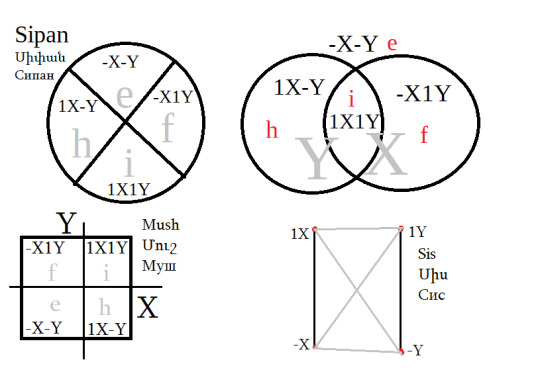
Graphical representation of binary operators, Sipan, Mush, Sis.
0 notes
Text
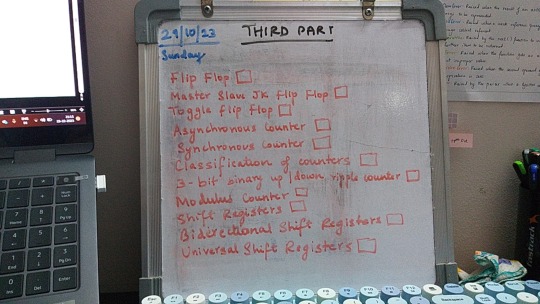
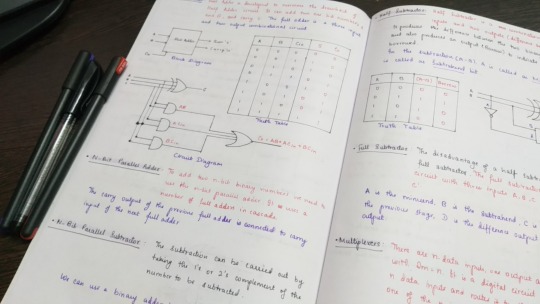

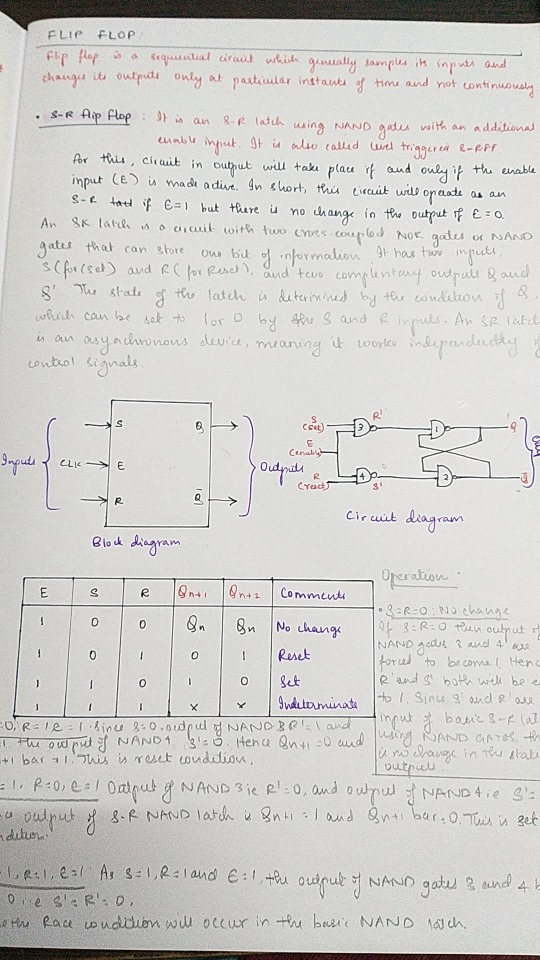
Oct 29, 2023 • Sunday
GUESS WHO'S BACK
Exams are just around the corner, and I have recovered (mostly) so got back to productivity. I missed my notes <3
The 1989tv vault tracks are stuck in my headddddd my favourite is Now that we don't talk. If you are a swiftie, what is your favourite vault track?

Things I did today:
40 out of 55 slides of a PPT
19 out of 27 concepts from Module 1 of computer science
Ate biryani :3 (and then had a tummy ache LOL)
P.S. the whiteboard is @studaxy's I STOLE IT (jk, they gave it to me lol)

🎧 Suburban Legends — Taylor Swift
#dailyfoxposts#foxcomp#studyblr#codeblr#studyspo#study#coding#note taking#physics studyblr#math studyblr#compblr#computer science#boolean algebra#logic gates#digital circuits#exam#exams#study motivation
120 notes
·
View notes
Note
Oooh, have you guys heard of the subspecies Boolean Algebraliens?
(sorry if this is like, too oc'ish lol)
[NONO THIS IS WONDERFUL I LOVE HEARING ABOUT YOU GUYS' IDEAS AND ID LOVE TO HEAR MORE <3<3]
[plus as a computer engineering student who took discrete math and digital logic and is VERY familiar with boolean algebra and gate logic it makes me personally very happy !!!!!]
Ooh I haven't heard of them personally, but I would not be surprised if there were a playground of them around somewhere! Algebralien playgrounds tend to host mainly one family at a time, such as the playground here on Goiky hosting integers while others host variables, geometrical figures, and likely... one full of boolean expressions!
[here's what I think some of them might look like in my style.... nothing is official though!]
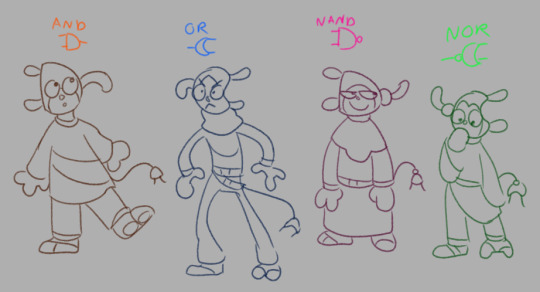
[if anyone has ideas or just wants to chat, by the way, my PMs on here are open if you don't want to send asks!!]
#xfohv#algebralien#algebraliens#asks#object show community#object shows#tpot#tpot gaty#speculative biology
33 notes
·
View notes
Text
After World Was II, the binary code, the von Neumann architecture, and the engineerings of efficient logic gates in microchips made possible the construction of fast computers and the formalisation of computer algorithms of larger size and higher complexity. For the first time in history, sequences of numerals came to represent not just quantities but instructions. The so-called ‘computer revolution’ was not just about the use of binary numerals (binary digits, or bits) to encode human language and analogue content (digitisation) but about accelerating mechanical computation through binary logic (or Boolean logic). Matteo Pasquinelli, 2023. The Eye of the Master: A Social History of Artificial Intelligence. London: Verso.
7 notes
·
View notes
Text
DFX452 | Post 4 | 5/1/25
I can't believe I'm so close to graduating - this will be the last DFX post I'll ever make! It's a little bittersweet. But we move forwards!
Let's take a quick look at what I've been up to since the last DFX post.
Finished coding hand puzzle
Finished coding button puzzle
Created all capybara characters for Level 1
Did lots of improvements on the grappling hook system
Major map building / fleshing out
Made some sacrifices
Let's explore each of these.
Hand puzzle
So, I got the brunt of the work done for the hand and statue puzzles in my last DFX post. Now they're complete!
With the hand statue puzzle, I was having some troubles with the thumb intersecting with two of the other fingers when opening or closing, since they overlap in 3D space while opening or closing the thumb. My first attempt at solving this resulted in jumpy animations and some glitches.
I'm glad to say I've made the code water-tight. Now, when you click on a finger, you are unable to click on it again while the opening or closing animation is playing. In regards to the thumb, there's now a delay set up so that you can't activate any of the three involved fingers while opening or closing the thumb, and this delay only applies if one or both of the offending fingers are closed. Long story short, it's all smooth. The only downside is that it's not quite as snappy as possible, but it's such a small detail that it's hardly an issue.
I've also created the second hand, a mirror image of the first one with different solution requirements (different combination of fingers). They both now cast to the main gate, which will open in a small cutscene if you get it right. After that, you can no longer interact with the hand statues.

Button puzzle
This was easy enough to finish, except for one aspect. Everyone, meet Pepper.

In order to open the final gate, you have to talk to Pepper, and he'll saunter on over to stand on the final button for you. There were so many little bits and bobs involved with the nodes I used that messed things up. It was a long, long series of easy fixes that finally got it to work.

A couple issues I ran into: He's perfectly perpendicular to the ground when walking up the ramp, and he is slow. Really, really slow.
The ramp issue is going to be a headache to fix. I already gave it a shot with no success. I did notice this issue in my original demo as well, but it was easy enough to ignore. Well, now it's on the docket for a future fix. I don't have the time to address it for finals!

The other issue is how slow he is. I made the capybaras really slow originally, since none of them had a real destination. They were intended to simply pace around leisurely.
Instead of doing major revamps to the capybara parent class (which I may do in the future), I just made Pepper really sleepy. He's just woken from a nap, or something, and so he takes his time getting to the button. Someday this will be the scourge of speedrunners. But I think it's kind of funny, so I'll probably keep it in.
Capy Characters and Dialogue
I talked about the dialogue system revamp I did in my last DFX post. There's really not much to say here - the new Capy class made it super easy to make all of the basic characters! It only took me probably around 20 or 30 minutes to make all of them. Nice!

Grappling hook fixes
Well, I did it! I made the grappling hook so, so, SO much better! It's not perfect, and may never be, but it's so much more functional. How about a list of fixes?
Fixed bad camera transition
Made it so you can't enter grapple mode while grappling (this one was a headache for the dumbest reason)
Fixed accidental delay between throwing hook and swinging
Created idle and throwing animations and implemented them
Fixed physics issues with 'grab' action
I used a little coding trick, using a boolean variable and some if/else statements, to prevent the player from being able to use the grappling hook while they're currently using the grappling hook. You could summon as many hooks as you wanted at any given time, if that makes any sense. But now you can't! Which fixes a lot of issues.
Map buildout
I've been hard at building out the map. It's easy, not much to really explain, so why don't I show you instead?
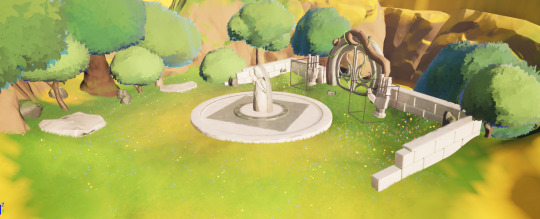


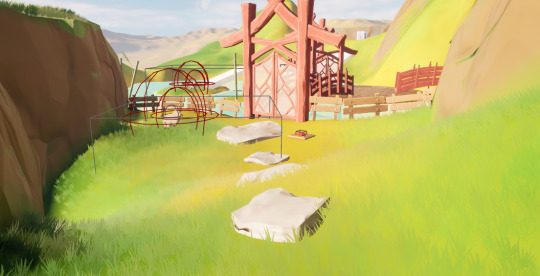

Sacrifices (and a little retrospective)
I really overestimated what I could accomplish this semester. If I had gotten a better start, I might have been able to finish it in time. The first two weeks of this project were dedicated to learning C++, and I ended up not being able to use it anyways, and I spent twice as long on assets as I had planned for. That accounts for around four full weeks of time that I could have used more wisely. As a result, I had to cut a lot of stuff out of the level, even some stuff that I worked really hard on. For example, I didn't have enough time to do the lineup puzzle at all, even though I spent lots of time making the wayshrine. Same story with the magic stone, and some other stuff.
I don't want to be too pessimistic, though. The assets took two extra weeks, but if I had gotten them all done 'on time' I would have rushed them and wound up with a ton of mediocre assets with lots of issues. I'm really proud of the assets I made, and so I can't fully regret taking so long to make them. In the long run, it's probably worth it.
I also had to cut out all of the cinematics for this submission. To be honest, even if I was perfectly on-schedule with everything else, I think I wouldn't have been able to finish it in time anyways. I've never done cinematics before, and it would be a lot of tedious animation. I'm not the best at animating, and it's not exactly my favorite thing to do in the realm of 3D art.
Overall, I think if I had a bit better time management, maybe I'd have more done. But what can I say? What I did get done was an astronomical amount of work to put on a single person's shoulders, especially as a full-time student with three other classes to juggle. So, in the end, I can't be mad at myself. Like I always say, we move forwards.
Where do we go from here?
I'm finishing the level. I'll say that right now. I don't care how long it takes, I really want this to be a full game. School's close to ending for me, and after that I'm moving and starting to job hunt. Once I'm settled in my new living space, I'll have lots of free time to get CapyQuest stuff done between job applications. CapyQuest is genuinely rewarding and fun to work on. It can be stressful, but even with looser deadlines, I think I can make something great.
I'll keep posting on this blog and working on the game. I'm hopeful for the future and really looking forward to what I can make.
Well, that's about it! See ya!
2 notes
·
View notes
Text
I am once again BEGGING people to fucking understand that "playersexual" IS a thing, it's just not a GOOD thing. There are many characters in many games (games which are NOT THE FUCKING BALDUR GATE) who are NOT "bisexual" because they are not EVER attracted to ANYONE but the player character. They are not written as fully fleshed out bisexual characters.
Pretending that there "is not such thing as playersexual" both undercuts games like BG3 that DO write in characters with complete, complex sexual and romantic arcs that are indeed bisexual in nature.
AND elevates shitty fuckshows games that toggled a boolean into "bisexual rep."
So, okay, let's recap people.
PLAYERSEXUAL IS A DEROGATORY TERM FOR WHEN OTHERWISE STRAIGHT CHARACTERS HAVE A SINGLE VARIABLE TOGGLE SET INSTEAD OF BEING IDENTIFIED AS BISEXUAL IN THE NARRATIVE
It absolutely fucking exists
BG3 is not however an example of playersexual because (say it with me)
BG3 characters are bisexual
As in they are shown, stated, or otherwise confirmed in the narrative to experience attraction to people of multiple genders not just the player character
please
the words
they have meanings okay
47 notes
·
View notes
Text
Date: February 25th, 2025
Update
I have been experimenting with some of the new data values I discovered, copying them from my personal file onto the default cube’s file. Most of the time, this results in an error message, of which I have currently discovered 3 varieties. I am unable to read them, but I have deduced that one likely means an incompatible value, one is a compatible value entered with an incompatible integer value, and one I don’t currently have a guess for.
I have also figured out why my current setup works to allow me editing capabilities. There is a Boolean value that I possess that caused a type 2 error when added to the cube, and the same type 2 error when changed.
A Boolean is a value type with two settings: true, and false. They are the simplest form of digital value, and are used for a variety of means, especially logic gates.
I believe this value denotes whether an object is considered to be digital or physical. It seems like the default cube does not have this value, which allows it to both exist in physical space, and be modifiable via digital means. This is because of a quirk with the code, where the scripts check for a value to be set to not false, rather than true. Thus, when receiving no input, the code would run normally. I believe that the cube likely was created before digital storage, so it wouldn’t need to have that value.
The existence of a “is digital” value brings up an interesting question: who added it? Humans didn’t have computers for several million years, and the fact that it clearly didn’t exist at some point means that there was a point in time when it was added. So who? And what did they plan for?
Pleasantly yours,
Tester
4 notes
·
View notes
Text
circuit gates my beloved but i have no idea if i fucked up simplifying boolean algebra
#i had a test like#2 weeks ago#and idk if i fucked up the laws of simplification#though#the rest of the test was fine#sooooooo it should be okay?
9 notes
·
View notes
Text
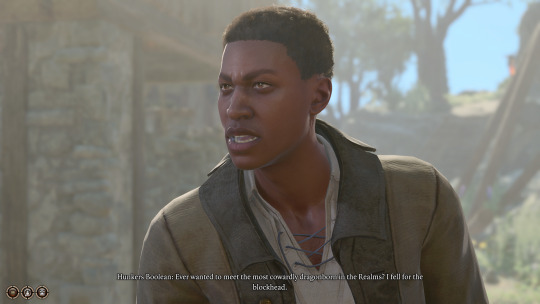
Everyone please welcome Hunkers Boolean, the fifth homosexual character in balders gate 3
6 notes
·
View notes
Photo
I like how there was a point in fiction like in say The Lift and Star Trek: Voyager when it was all the rage to include biological components in machinery, in particular neural ones to allow them to do “fuzzy logic”. As in Voyager actually had these “bio-neural gel packs” to allow the computer to perform human-like fuzzy logic. But now people are just like “Nahh, we can simulate neurons on boolean logic gates in a processor just fine, no need to put organic components into it.” and it completely dominates the world now.

Voyager's “bio-neural gel packs”.




Simon Stålenhag - http://www.simonstalenhag.se/
29K notes
·
View notes
Text
From Circuits to Solutions: Practical Projects to Elevate Your EE Skills
From Breadboards to Breakthroughs” encapsulates the journey of an aspiring electrical engineer as they evolve from basic circuit experiments to advanced, real-world engineering projects. Hands-on projects are essential for building practical skills, reinforcing theoretical knowledge, and preparing for professional challenges. Below is a guide to project-based learning that can help you improve your electrical engineering (EE) skills at every stage.
Beginner Projects: Building Foundations
Simple LED Circuit
What you learn: Basic circuit design, current and voltage concepts, use of resistors and LEDs.
Tools: Breadboard, jumper wires, resistors, LEDs, battery.
Battery Tester
What you learn: Measuring voltage and current, basic instrumentation, and safety practices.
Water Level Indicator
What you learn: Sensor integration, simple logic circuits, and practical applications.
Logic Gates and Digital Circuits
What you learn: Boolean logic, digital circuit fundamentals, and troubleshooting.
DIY Switch Circuits
What you learn: Circuit switching, input/output devices, and practical wiring.
Intermediate Projects: Expanding Your Skills
Infrared Security System
What you learn: Sensor-based security, signal processing, and system integration.
Digital Voltmeter
What you learn: Instrumentation, analog-to-digital conversion, and measurement accuracy.
Solar Charger
What you learn: Renewable energy concepts, power management, and circuit protection.
Motor Control Circuits
What you learn: Driving motors, pulse-width modulation (PWM), and power electronics.
Heart Rate Monitor
What you learn: Biomedical instrumentation, sensor interfacing, and signal filtering.
Advanced Projects: Real-World Breakthroughs
Smart Home Automation System
What you learn: IoT, wireless communication (Bluetooth, Wi-Fi), and system integration.
Wireless Power Transfer System
What you learn: Inductive coupling, resonant circuits, and energy efficiency.
Dual Axis Solar Power Tracker
What you learn: Mechatronics, sensor feedback, and renewable energy optimization.
Smart Energy Meter
What you learn: Real-time data monitoring, wireless communication, and energy management.
DIY Quadcopter or Drone
What you learn: Embedded systems, motor control, wireless communication, and robotics.
Why Hands-On Projects Matter
Resume Building: Practical projects demonstrate your skills to potential employers and can help you land internships or jobs
Theory Application: Projects bridge the gap between classroom learning and real-world engineering challenges.
Skill Discovery: Experimenting with different projects helps you identify your interests and strengths.
How to Get Started
Gather Basic Tools: Invest in a quality breadboard, jumper wires, resistors, capacitors, LEDs, and a multimeter.
Start Simple: Begin with basic circuits and gradually tackle more complex projects as your confidence grows.
Use Online Resources: Take advantage of tutorials, simulation tools, and open-source project guides.
Join Maker Communities: Engage with online forums, local maker spaces, and engineering clubs for support and inspiration.
Document Your Work: Keep a project journal, take photos, and share your progress on platforms like GitHub or LinkedIn.
Conclusion
Arya College of Engineering & I.T. is one of the best colleges of Jaipur, which is progressing from breadboard experiments to advanced engineering projects is a transformative process that builds both technical expertise and problem-solving confidence. By systematically advancing through beginner, intermediate, and advanced projects, you will develop a robust skill set that prepares you for the challenges and opportunities of a career in electrical engineering.
1 note
·
View note
Text
From Breadboards to Breakthroughs: Hands-On Projects to Improve Your EE Skills

From Breadboards to Breakthroughs” encapsulates the journey of an aspiring electrical engineer as they evolve from basic circuit experiments to advanced, real-world engineering projects. Hands-on projects are essential for building practical skills, reinforcing theoretical knowledge, and preparing for professional challenges. Below is a guide to project-based learning that can help you improve your electrical engineering (EE) skills at every stage.
Beginner Projects: Building Foundations
Simple LED Circuit
What you learn: Basic circuit design, current and voltage concepts, use of resistors and LEDs.
Tools: Breadboard, jumper wires, resistors, LEDs, battery.
Battery Tester:
· What you learn: Measuring voltage and current, basic instrumentation, and safety practices.
Water Level Indicator
What you learn: Sensor integration, simple logic circuits, and practical applications.
Logic Gates and Digital Circuits: What you learn: Boolean logic, digital circuit fundamentals, and troubleshooting.
DIY Switch Circuits: What you learn: Circuit switching, input/output devices, and practical wiring.
Intermediate Projects: Expanding Your Skills
Infrared Security System: What you learn: Sensor-based security, signal processing, and system integration.
Digital Voltmeter: What you learn: Instrumentation, analog-to-digital conversion, and measurement accuracy.
Solar Charger: What you learn: Renewable energy concepts, power management, and circuit protection.
Motor Control Circuits
What you learn: Driving motors, pulse-width modulation (PWM), and power electronics.
Heart Rate Monitor: What you learn: Biomedical instrumentation, sensor interfacing, and signal filtering.
Advanced Projects: Real-World Breakthroughs
Smart Home Automation System: What you learn: IoT, wireless communication (Bluetooth, Wi-Fi), and system integration.
Wireless Power Transfer System: What you learn: Inductive coupling, resonant circuits, and energy efficiency.
Dual Axis Solar Power Tracker: What you learn: Mechatronics, sensor feedback, and renewable energy optimization.
Smart Energy Meter: What you learn: Real-time data monitoring, wireless communication, and energy management.
DIY Quadcopter or Drone: What you learn: Embedded systems, motor control, wireless communication, and robotics.
Why Hands-On Projects Matter
Resume Building: Practical projects demonstrate your skills to potential employers and can help you land internships or jobs
Theory Application: Projects bridge the gap between classroom learning and real-world engineering challenges.
Skill Discovery: Experimenting with different projects helps you identify your interests and strengths.
How to Get Started
Gather Basic Tools: Invest in a quality breadboard, jumper wires, resistors, capacitors, LEDs, and a multimeter.
Start Simple: Begin with basic circuits and gradually tackle more complex projects as your confidence grows.
Use Online Resources: Take advantage of tutorials, simulation tools, and open-source project guides.
Join Maker Communities: Engage with online forums, local maker spaces, and engineering clubs for support and inspiration.
Document Your Work: Keep a project journal, take photos, and share your progress on platforms like GitHub or LinkedIn.
Conclusion
Arya College of Engineering & I.T. is one of the best engineeering college in Jaipur, which is progressing from breadboard experiments to advanced engineering projects is a transformative process that builds both technical expertise and problem-solving confidence. By systematically advancing through beginner, intermediate, and advanced projects, you will develop a robust skill set that prepares you for the challenges and opportunities of a career in electrical engineering.
Source: Click Here
#best btech college in jaipur#top engineering college in jaipur#best private engineering college in jaipur#best engineering college in rajasthan#best btech college in rajasthan#best engineering college in jaipur
0 notes
Text
ECECS407 Secure Two-Party Computation Assignment
Yao’s garbled circuits protocol allows two parties to perform an arbitrary computation without revealing their inputs to each other. In this assignment, your task will be to implement the garbled circuit protocol. For our purposes, the computation is expressed as a feed-forward boolean circuit. To keep things simple, we only consider gates with 2 inputs and 1 output wire. We also simplify things…
0 notes
Text
In order to put the history of AI in perspective, it is important at this point to clarify the difference between deductive and inductive logic. Since Leibniz’s idea of a calculus ratiocinator, the modern project of pursuing machine intelligence has been founded on the postulate that human logic can be expressed by propositional logic (‘if x, then y is true/false’), which is equivalent to Boolean logic (AND, OR, and NOT operators). A proposition expressed according to this formal logic can be easily encoded into a mechanism made of rotating gears, electric relays, or electronic gates, such as valves or transistors. On a closer look, this type of logic is pursuing a linear form of rationality that replicates the linearity of written language and symbol manipulation according to the rules of deductive inference — an approach well exemplified by the Turing machine and the way it executes instructions from a one-dimensional tape. Symbolic AI, expert systems, and inference engines are all examples of this tendency of deductive machines that continued until the 1980s. On the other hand, artificial neural networks — along with all machie learning algorithms — are examples of inductive machines. Whereas deductive logic is the application of a rule, reasoning from the general to the particular, inductive logic involves reasoning from the particular to the general, thereby forming rules of classification. The canonical example is the movement from the discovery that ‘each human being dies’ to the definition of the rule that ‘all human beings are mortal’. This opposition between deductive and inductive logic is key to understanding not only the Gestalt controversy but also the rise of machine learning. Matteo Pasquinelli, 2023. The Eye of the Master: A Social History of Artificial Intelligence. London: Verso.
4 notes
·
View notes
Note
Do you have a favorite method to make logic gates?
Hi Anon! Thanks for the Ask!!
I haven't messed with logic gates in a long time, but i generally start with the boolean algebra and go from there. I hate karnaugh maps with a burning passion, so i will literally do the boolean reductions myself which is... maybe not advised, but I don't do enough of it in my day-to-day for the time sink to be a problem.
Let me know if you need resources or anything, I learned from the David Harris and Sarah Harris "Digital Design and Computer Architecture" 2ed textbook because Sarah Harris was my prof, but its straight up the best textbook to get computer engineering from (in my experience at least)!
0 notes
Text
Experiment - 4
Aim: Study of Boolean algebra truth tables for Logic Gate functions using AND, OR, NAND, NOR etc. ICs.. Electronic Parts Required: (i) Power supply, 1 No : +5 V (Fix +5 V from variable voltage source if constant +5 V is not available) (ii) AND Gate: IC 7408, 1 No (iii) OR Gate: IC 7432, 1 No (iv) NOT Gate: IC 7404, 1 No (v) NAND Gate: IC 7400, 1 No (vi) NOR Gate: IC 7402, 1 No (vii) X-OR Gate: IC…
0 notes